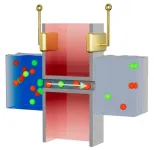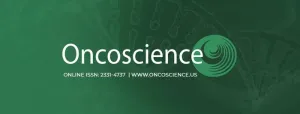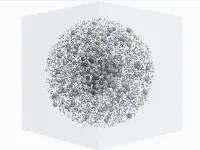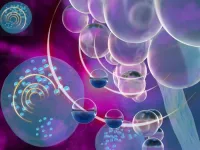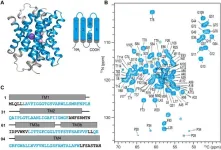(Press-News.org) There is a largely untapped energy source along the world’s coastlines: the difference in salinity between seawater and freshwater. A new nanodevice can harness this difference to generate power.
A team of researchers at the University of Illinois Urbana-Champaign has reported a design for a nanofluidic device capable of converting ionic flow into usable electric power in the journal Nano Energy. The team believes that their device could be used to extract power from the natural ionic flows at seawater-freshwater boundaries.
“While our design is still a concept at this stage, it is quite versatile and already shows strong potential for energy applications,” said Jean-Pierre Leburton, a U. of I. professor of electrical & computer engineering and the project lead. “It began with an academic question – ‘Can a nanoscale solid-state device extract energy from ionic flow?’ – but our design exceeded our expectations and surprised us in many ways.”
When two bodies of water with different salinity meet, such as where a river empties into an ocean, salt molecules naturally flow from higher concentration to lower concentration. The energy of these flows can be harvested because they consist of electrically charged particles called ions that form from the dissolved salt.
Leburton’s group designed a nanoscale semiconductor device that takes advantage of a phenomenon called “Coulomb drag” between flowing ions and electric charges in the device. When the ions flow through a narrow channel in the device, electric forces cause the device charges to move from one side to the other creating voltage and electric current.
The researchers found two surprising behaviors when they simulated their device. First, while they expected that Coulomb drag would primarily occur through the attractive force between opposite electric charges, the simulations indicated that the device works equally well if the electric forces are repulsive. Both positively and negatively charged ions contribute to drag.
“Just as noteworthy, our study indicates that there is an amplification effect” said Mingye Xiong, a graduate student in Leburton’s group and the study’s lead author. “Since the moving ions are so massive compared to the device charges, the ions impart large amounts of momentum to the charges, amplifying the underlying current.”
The researchers also found that these effects are independent of the specific channel configuration as well as the choice of materials, provided the channel diameter is narrow enough to ensure proximity between the ions and the charges.
The researchers are in the process of patenting their findings, and they are studying how arrays of these devices could scale for practical power generation.
“We believe that the power density of a device array could meet or exceed that of solar cells,” Leburton said. “And that’s not to mention the potential applications in other fields like biomedical sensing and nanofluidics.”
***
Kewei Song also contributed to this work.
The researchers’ article, “Ionic coulomb drag in nanofluidic semiconductor channels for energy harvest,” is available online. DOI: 10.1016/j.nanoen.2023.108860
END
Nanofluidic device generates power with saltwater
2023-09-22
ELSE PRESS RELEASES FROM THIS DATE:
New program helps health professionals and community members determine health risks and create medical interventions for people experiencing homelessness
2023-09-22
New Program Helps Health Professionals and Community Members Determine Health Risks and Create Medical Interventions for People Experiencing Homelessness
A consortium of population health professionals, physicians, frontline staff, and community partners in Toronto established the Community Assessment and Risk Evaluation (CARE) program, a rapid risk assessment and clinical population medicine intervention to respond to challenges faced by people experiencing homelessness (PEH). The intervention also helped characterize health needs and mitigate risks among this population. ...
ISSCR Kicks off São Paulo International Symposium today in Ribeirão Preto, Brazil
2023-09-22
The unique symposium, taking place 22-24 September 2023, is designed to highlight progress in the continuum of stem cell science from early development into clinical applications. Scientists from Latin America and across the globe are convening to share their latest stem cell research in areas such as pluripotency and early development and its adult counterpart, tissue stem cells and regeneration. Advances in understanding cellular plasticity through reprogramming and directed differentiation will be showcased as will the emerging field of tissue self-organization dynamics and innovative new technologies and tools that are driving the field forward. The program will be capped ...
Texas A&M researchers show endangered parrot species is thriving in urban areas
2023-09-22
A Texas A&M-led research team has discovered that a population of endangered red-crowned parrots is thriving in urban areas of South Texas. The parrots are a unique case, considering that many animal species are affected negatively by the expansion of human urban areas, which can lead to deforestation and pollution of natural habitats.
These mostly green parrots, which have a cluster of bright red feathers on their heads, are also an unusual example of a species that has adapted well in the face of poaching and the pet trade ...
Kinase-targeted therapy in subsets of colorectal cancer
2023-09-22
“We have summarized some of our findings regarding the response of various subsets of CRC to kinase inhibitors [...].”
BUFFALO, NY- September 22, 2023 – A new editorial paper was published in Oncoscience (Volume 10) on June 27, 2023, entitled, “Kinase-targeted therapy in subsets of colorectal cancer.”
In this new editorial, researchers Patricia M. Gomez Barila and Jan Paul Medema from the University of Amsterdam and Amsterdam University Medical Centers discuss colorectal cancer (CRC) — one of the most commonly diagnosed cancers and the second leading cause of cancer-related deaths worldwide. Early diagnosis and adequate treatment are crucial ...
Sylvester Research: Socioeconomic status linked with outcomes and survival in patients treated for non-small cell lung cancer
2023-09-22
MIAMI, FLORIDA (Sept. 22, 2023) – Researchers at Sylvester Comprehensive Cancer Center at the University of Miami Miller School of Medicine found an association between “social determinants of health” and outcomes and survival in patients undergoing surgery and treatment for non-small cell lung cancer.
The findings are based on a statistical scoring system the researchers developed that consolidates and analyzes several measures of socioeconomic status and related factors.
“We believe our social determinants of health scoring system is the first to provide a composite perspective on many of the ...
Scientists reveal marvellous x-ray mask absorber in the active galaxy NGC 6814
2023-09-22
A research team led by Prof. WANG Junxian from the University of Science and Technology of China (USTC) of the Chinese Academy of Sciences (CAS) revealed a clumped, multi-component eclipsing absorber in a study of X-ray occultation events in the active galaxy NGC 6814. The results were published in Monthly Notices of the Royal Astronomical Society on Aug. 23.
Active galactic nuclei have strong X-ray emission originating in a compact region near the supermassive black hole, the so-called corona region. When an absorbing ...
Tiny bubbles could reveal immune cell secrets and improve treatments
2023-09-22
UNIVERSITY PARK, Pa. — Macrophages are little cells vital to the immune system and could possibly inform cell-based therapies for a variety of medical conditions. However, realizing the full potential of macrophage therapies relies on being able to see what these cellular allies are doing inside our bodies, and a team of Penn State researchers may have developed a way to watch them do their thing.
In a study published in the journal Small, the Penn State researchers report a novel ultrasound imaging technique to view macrophages continuously in mammal tissue, with potential for human ...
Solid-state NMR unveils fluoride ion channel permeation mechanism
2023-09-22
On August 23, 2023, a research team led by SHI Chaowei from the University of Science and Technology of China (USTC) of the Chinese Academy of Sciences (CAS) published a paper titled "Fluoride permeation mechanism of the Fluc channel in liposomes revealed by solid-state NMR" in Science Advances. The team adopted the fluoride ion channel protein Fluc-Ec1 combined with deuterium substitution and 19F labeling methods, paving a new path for membrane protein nuclear magnetic resonance (NMR) research.
NMR not only provides insights into molecular structures ...
Earth’s crust, tectonic plates gradually formed, geoscientists find
2023-09-22
UNIVERSITY PARK, Pa. — The Earth’s crust continued a slow process of reworking for billions of years, rather than rapidly slowing its growth some 3 billion years ago, according to a Penn State-led research team. The new finding contradicts existing theories that suggest the rapid formation of tectonic plates earlier in Earth’s history, researchers said.
They published the research in Geochemical Perspectives Letters.
The work may help answer a fundamental question about our planet and could hold clues as to the formation of other planets, according to lead author ...
Dinosaur feathers contain traces of ancient proteins, study finds
2023-09-22
How similar are dinosaurs to modern birds? This question is at the heart of a new study that examined how proteins found in dinosaur feathers changed over millions of years and under extreme heat.
Previous studies suggest that dinosaur feathers contained proteins that made them less stiff than modern bird feathers. Now, researchers with University College Cork (UCC), the Stanford Synchrotron Radiation Light Source (SSRL) at the Department of Energy's SLAC National Accelerator Laboratory and other institutions have discovered that dinosaur feathers originally had a very similar protein composition to those of modern birds. That result ...
